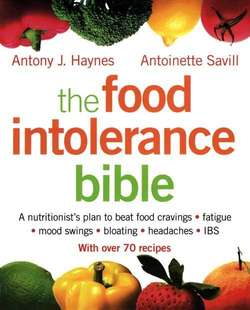Читать книгу The Food Intolerance Bible: A nutritionist's plan to beat food cravings, fatigue, mood swings, bloating, headaches and IBS - Antoinette Savill, Antoinette Savill - Страница 68
Food Allergen Cellular Test (FACT)
ОглавлениеThis is a test that measures cellular mediators released from white blood cells, such as histamine and leukotrienes (which can be 10,000 more inflammatory than histamine), when they are exposed to food allergens. It is available from a lab called Individual Wellbeing Diagnostic Laboratories (see Appendix II).
It is already known that inflammatory chemicals are responsible for a number of symptoms associated with food intolerance. ELISA technology is used in the testing procedure to measure leukotriene release very precisely. Since leukotrienes are released in the face of a number of different types of intolerance/allergic reaction, including IgE and IgG as well as other non-immune-related responses, the test is therefore thought to be capable of detecting a wide range of reactions.
This test has been the subject of a study involving 200 participants with clearly defined symptoms. On the basis of the results, each participant was given a fourday rotational diet plan which excluded those foods that had appeared positive in the FACT. They followed this diet for three months. Their symptoms had included rheumatism/joint or muscle pain, fatigue, lethargy, mood fluctuation, eczema, itchy skin, acne; migraine, headache, IBS, diarrhoea, constipation, bloating, stomach cramps; weight problems, sinus congestion, rhinitis and Chronic Fatigue Syndrome.
At the end of the three months, the participants reported on the status of their symptoms in terms of frequency and severity. The improvements across the board were noteworthy, and are shown below:
| Symptom Completed | Number Percentage | Number and Percentage of Participants Who Showed Improvement |
| Rheumatism/joint or muscle pain | 8 | 7 (88%) |
| Fatigue, lethargy, mood fluctuation | 38 | 35 (97%) |
| Eczema, itching skin, acne | 16 | 13 (81%) |
| Migraine, headache | 11 | 9 (82%) |
| IBS, diarrhoea, constipation, bloating, stomach cramps | 80 | 71 (93%) |
| Weight problems | 26 | 24 (92%) |
| Sinus congestion, rhinitis | 4 | 3 (75%) |
| Chronic Fatigue Syndrome | 2 | 1 (50%) |
These improvements are impressive, and highlight the significant association of food intolerance and IBS, something noted in the 1982 Lancet study cited earlier. In a clinical setting, the outcome of patients who have excluded the positive foods identified by this test are similar to the impressive figures shown above. An experienced and extremely knowledgeable nutritionist, Xandria Williams, has used this test for years:
I have used a range of different food intolerance tests including IgG Elisa and Cytotoxic, but in my clinical experience the best results have been achieved when using the FACTest.
Xandria Williams, nutritional practitioner and best-selling author of Living with Allergies
In a more recent analysis of food intolerance testing and IBS, described in the Introduction, similarly encouraging results were found.
It would seem that if you have IBS you would do well to avoid the foods to which you are intolerant, and if you cannot find out which foods these are, then a test measuring either IgG or cellular mediators (e.g. the FACTest) would be advisable. The test in this instance would almost certainly save you time and effort in determining which foods to avoid.
The time factor is one of the most important advantages of having a blood test for food intolerances, certainly compared with elimination diets, which are discussed below.
